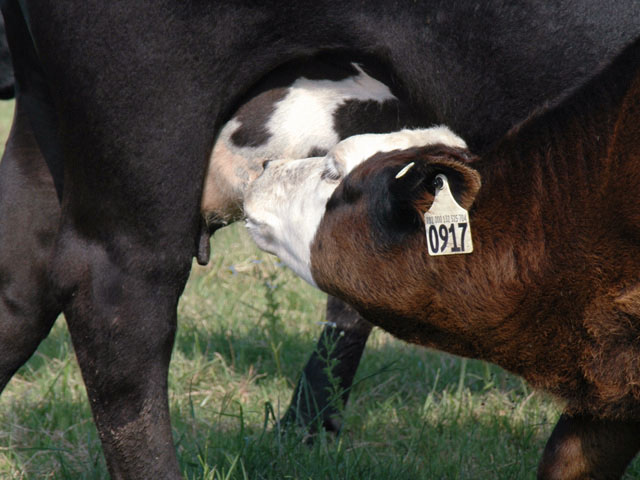Calving Distribution
Track Calving in 21-Day Increments
A calendar and a No. 2 pencil could be the ticket to better herd performance this year. Keeping track of calving distribution can yield valuable information for any cow-calf operation.
Craig Payne, University of Missouri Extension veterinarian, says this is one thing that doesn't take much time but can really help boost performance. He tracks calving distribution as part of a three-year project to help beef producers improve whole-herd record keeping.
P[L1] D[0x0] M[300x250] OOP[F] ADUNIT[] T[]
The system is looked at in 21-day blocks because that is the average length of the estrous cycle in cattle. So, the system looks at the percentage of calves born in each 21-day interval.
There are two reasons this information is helpful, says Payne. First, dams of early born calves have more time to recover before the next breeding season. That means they will more likely be cycling at the beginning of the breeding season and have a better chance at conception. Second, early born calves have longer to gain weight. More pounds of calf to sell at weaning equals bigger profits.
Payne reports weaning weights collected from the northwestern Missouri operation, fall 2020, showed steer calves born the first 21 days of the calving season averaged 47 pounds heavier at weaning (537 pounds) than calves born during that second 21-day interval (490 pounds).
To try this system, Payne says one way is to begin the first 21-day period about 283 days from bull turn-in or artificial insemination (AI). If that date is unknown, start the first 21-day period the day the third calf is born. Either method will work, but pick one and use it consistently.
To get a percentage of calves born in a 21-day interval, divide 21 by the total number of calves born in that interval. Count all full-term calves, whether born dead or alive. Also include calves born before the beginning of the first 21-day period. After the calving season ends, evaluate calving distribution for first-calf heifers separately from the mature herd, as their breeding seasons are often earlier or managed differently.
Industry standards provide some benchmarks producers can look to. The first, second and third 21-day intervals are 65%, 23% and 7%. The remaining 5% are born later than that third interval.
Hitting these benchmarks requires cows are cycling at the beginning of the breeding season, and the bull(s) is fertile.
"If your distribution is unfavorable, meaning a higher percentage of calves are born later in the calving season, it could indicate one or more problems and will require more investigation," notes Payne. Factors he says producers should first consider include nutrition, bull power for the herd size, bull fertility, disease or conditions that cause early embryonic loss or infertility. Another issue may be a mismatch between herd genetics and the environment.
(c) Copyright 2021 DTN, LLC. All rights reserved.





